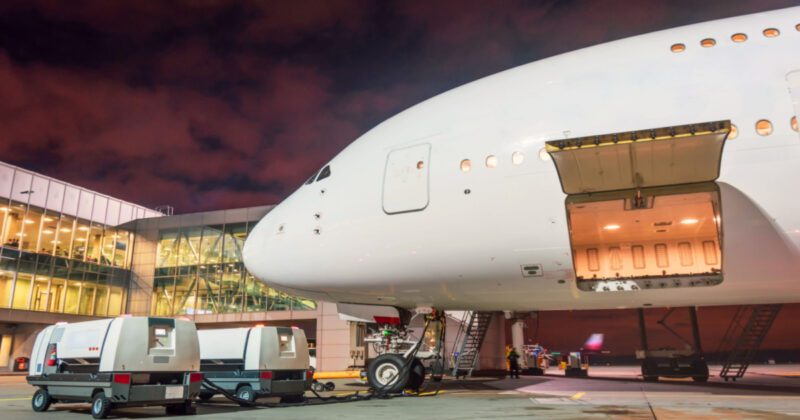
Volatile air freight rates a reality as fuel prices go sky high

Surging jet fuel prices are the latest disruptor to global air cargo markets, with surcharges more than doubling overall freight costs. The situation is particularly gloomy for Asia, which was usually vibrant in terms of outlook.
According to the International Air Transport Association (IATA), global jet fuel prices in mid-May were up 126.8 percent year-on-year, inflating the collective global fuel bill for airlines this year to a forecast USD$120.1 billion.
Rising costs are dampening the return of passenger capacity, according to the May DHL Air Freight Market Update, which notes that “high prices” for the fuel are a factor in the “already slow belly capacity recovery” and are a factor “adding to the high rates”.
However, in Asia, it is Covid-19 travel restrictions in particular which continue to weigh most heavily on chances of a bounce-back in bellyhold options.
Willie Walsh, Director General of IATA, told delegates at the Changi Aviation Summit hosted in Singapore in May that while international travel in 2021 had shrunk to a quarter of that in 2019, the first quarter of this year had seen it climb to 48 percent, compared to the same quarter in 2019. But Asia is a different story.
“Indeed, in some parts of the world including Europe, North America, and Latin America, the recovery has reached around 60 percent,” Walsh said. “Regrettably, Asia continues to lag the recovery in 2021. International travel was only at 7 percent of where we were in 2019. And although it's improved to 17 percent in the first quarter of this year, there is still a long way to go.
“And to put it into context, international travel within this region, one of the biggest and most important international markets in the world, is only at 6 percent of where it was in 2019.”
Walsh went on to call for a change in Covid-19 policies that stymied trade and travel, particularly in China. As the heavy demand for shipping increases, border re-opening is essential to increase the much needed capacity.
Lockdowns and travel restrictions related to Covid-19 were part of the reason why global air cargo capacity was 16 percent lower in May this year versus the same month in 2019, with bellyhold capacity still 21 percent below pre-Covid-19 levels, according to the latest DHL Update.
Month-on-month capacity levels are still fluctuating due to recent service disruptions, flight cancellations and re-routings, especially on many intra-Asia routes which were previously part-supported by seasonal or scheduled passenger flights.
Asia Pacific outbound flight cancellations are also still common, especially in China, while the closure of airspace due to war in Ukraine is adding to pressure on alternate trade lanes as cargo is re-routed.
“Essentially, capacity and demand are out of sync. Even though demand growth has softened and factory closures and/or truck bans are stopping lots of cargo reaching airports and ports, we are still in a capacity constrained environment,” said Kelvin Leung, CEO, DHL Global Forwarding Asia Pacific.
The upshot of this capacity crunch and rising fuel costs is that even as economic forecasts are downgraded and stock markets tumble on a cocktail of fiscal policy tightening, food insecurity, war in Europe and inflation, air cargo prices have remained at historically high levels on many key lanes.
“Easing demand pressure has allowed for some measure of debottlenecking and some anecdotal reports of air-to-ocean conversion,” said a report for the Baltic Exchange by Bruce Chan, Director & Senior Analyst, Global Logistics & Future Mobility Equity Research at Stifel.
“However, there have been few signs of respite in global air cargo prices, which remains elevated relative to 2021 on Asia-origin lanes.”
On Asia-to-Europe lanes, rates in April from Hong Kong and from Shanghai were still 30 percent and 70 percent higher, respectively, than the same period in 2021, according to Chan. This is relatively higher compared with rates to North America, which rose 13 percent and 27 percent year-on-year, respectively.
All eyes are currently on when and how China might lift lockdowns. In May, more than 40 Chinese cities and over 300 million people were subject to strict Covid-19 shutdowns, according to Nomura, and most economic indicators for China have tumbled.
Analysts have been comparing China’s re-opening to taking a cork out of a bottle of freight. “We are hearing more positive messages on Chinese policy and we are hopeful that we will see some of these backlogs starting to be cleared and a return to more normal operations out of Asia in June and July,” said Leung.
But it is a volatile market at the moment and hopes of a potential rush of cargo, both inbound to factories desperate for sub-components, and exports still sitting in storage, are in place.
“However, we have found more than one false dawn during these extraordinary times, so any optimism is tempered by the possibility that more Covid-19 outbreaks could lead to a further tightening of policy,” cautioned Leung.
MORE FROM THIS COLLECTION














 English
English